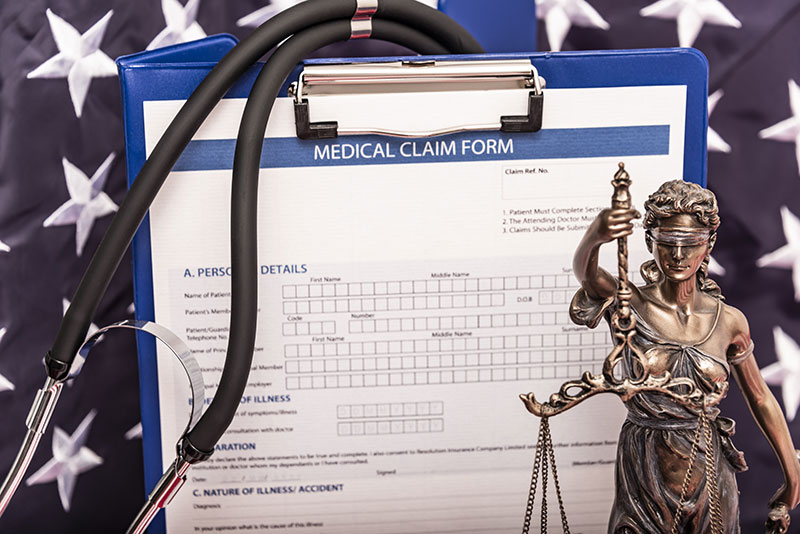The anesthetic record is primarily a medical record and it is significant from the point of view of patient safety. It is an important medico-legal document and also valuable for research and as a quality assurance tool. Just as other medical records, these documents prepared by anesthesiologists are also requested for medical records analysis during proceedings such as billing reviews by insurers, investigative proceedings in a personal injury case and so on. Ideally, the anesthetic record should contain accurate documentation of the anesthetic procedures, and allow a medico-legal expert to determine whether a clinician adhered to the accepted standard of care. It should help in the preparation of a proper defense in case a lawsuit arises. If the anesthetic record is incomplete or unclear, it can have a negative impact.
As a medical record, the documentation made by the anesthesiologist reflects the quality of care provided to the patient. Poor documentation would give the impression to the court that patient management was haphazard and careless even if it was properly done. On the other hand, meticulous records would convey to the court that the error committed was within the area of tolerable human error and doesn’t amount to negligence, as mentioned in an article on the anesthetic record published in the Journal of Anesthesia and Clinical Research.
Anesthesia Documentation Best Practices
The American Society of Anesthesiologists’ Statement on Documentation of Anesthesia Care Committee of Origin: Committee on Quality Management and Departmental Administration (QMDA) provides a clear view regarding documentation requirements for anesthesia procedures. The three general phases of anesthesia care are Pre-anesthesia, Intraoperative/Intraprocedural anesthesia, and Post-anesthesia care. It is vital for anesthesiologists to ensure accurate and thorough documentation in all these three phases so that there is accuracy in the medical records and to facilitate any future medical chart reviews. Ideally, departments and practices should have local policies that lay out how information may be provided when documenting patient evaluations. The medical documentation could be provided on a paper record or within an electronic record. Moreover, anesthesiologists should be proactive and ensure that accurate and thorough medical record keeping is achieved by the appropriately trained and credentialed anesthesia care team members who are assigned that task. And, this documentation should meet all relevant regulatory, legal, and billing compliance requirements.
Here are the documentation details the anesthesia record should contain.
- Pre-anesthesia Evaluation
- Patient interview to gather information regarding the patient, procedure identification, anticipated disposition, medical history, surgical history, anesthetic history, current medication list, allergies and adverse drug reaction, and NPO status. The presence of a peri- operative plan and the plan itself for existing advance directives should be documented.
- Physical examination – vital signs, height, weight, documentation of airway assessment and cardiopulmonary exam.
- Assignment of ASA physical status, including emergent status when relevant.
- Medical consultations when relevant
- Review of objective diagnostic data such as lab, ECG and X-ray, and medical records.
- The anesthetic plan including those for post-anesthesia care and pain management.
- Informed consent documentation including risks, alternatives, and benefits of the anesthetic plan as well as the post-surgical pain management plan.
- If indicated, appropriate premedication and prophylactic antibiotic administrations.
- Intra-operative/procedural anesthesia (time-based record of events)
- Documentation regarding patient re-evaluation, confirmation of the availability as well as proper function of all necessary equipment, staff, and medications immediately before the start of anesthesia care and procedures.
- Medications administered including dose, time, route and response.
- Physiologic monitoring data
- Techniques used
- Intravenous fluids including volume, type, and time
- Patient positioning and actions taken to reduce the chance of unfavorable patient outcome or complications related to positioning
- Further procedures performed including vessel location, catheter type/size, insertion technique such as use of ultrasound or sterile technique, actions taken to minimize chances of complications, stabilization technique, and dressing
- Significant/unusual events during anesthesia care and surgery
- Status of the patient at transfer of care to staff in a post-operative care unit or PACU
- Post-anesthesia
- Time-based record of events that clearly shows the patient status on admission and discharge from the PACU, as determined by a qualified anesthesia provider or by local departmental preset discharge protocols or admission to the intensive care unit.
- If PACU is sidestepped, criteria demonstrating that patient status at the transfer of care should be documented.
- The anesthesiologist is not required to document the patient’s condition throughout the PACU stay or when leaving it.
- Important / unforeseen post-procedural complications/events
- Post-anesthesia evaluation that documents physiologic condition and presence/absence of anesthesia related complications/complaints
Anesthesia record may also include the conscious sedation record that is generated when patients are having a procedure that requires conscious sedation. In this, the patient remains conscious, not fully anesthetized but is given enough medication so that he/she is asleep or in and out of a sleeping pattern throughout the procedure. This document should contain the vital signs and other monitoring parameters utilized during the procedure and for a period of time after the procedure is completed, until the patient is fully recovered. A medical peer review organization would be focusing on the above documentation aspects when reviewing anesthetic medical records relating to an insurance company review, or in connection with medical malpractice/personal injury cases.
According to a medscape.com article “Medscape Malpractice Report 2015: Why Anesthesiologists Get Sued,” around seventeen percent of anesthesiologists surveyed said that they would have used better documentation to avoid getting sued. Documentation errors and inadequate documentation pose the risk of malpractice lawsuits for anesthesiologists. Studies show that the electronic medical record is more likely to be legible and complete compared to handwritten records and a medical review company frequently engaged in medical record review would endorse this view. If anesthesiologists use handwritten records, they must make sure that any recording errors are corrected immediately with a single strikeout, then initialed and dated. If the records are altered “after the fact,” it could be judged quite harshly by the courts in case of a malpractice suit. Any additional or even contradictory information to be added at a later time should be included in a separate note with the correct date of entry. Proper anesthesia record keeping is the best way for anesthesiologists to stay away from medical malpractice lawsuits and subsequent penalties.




